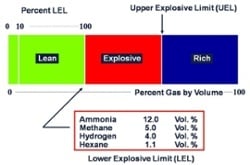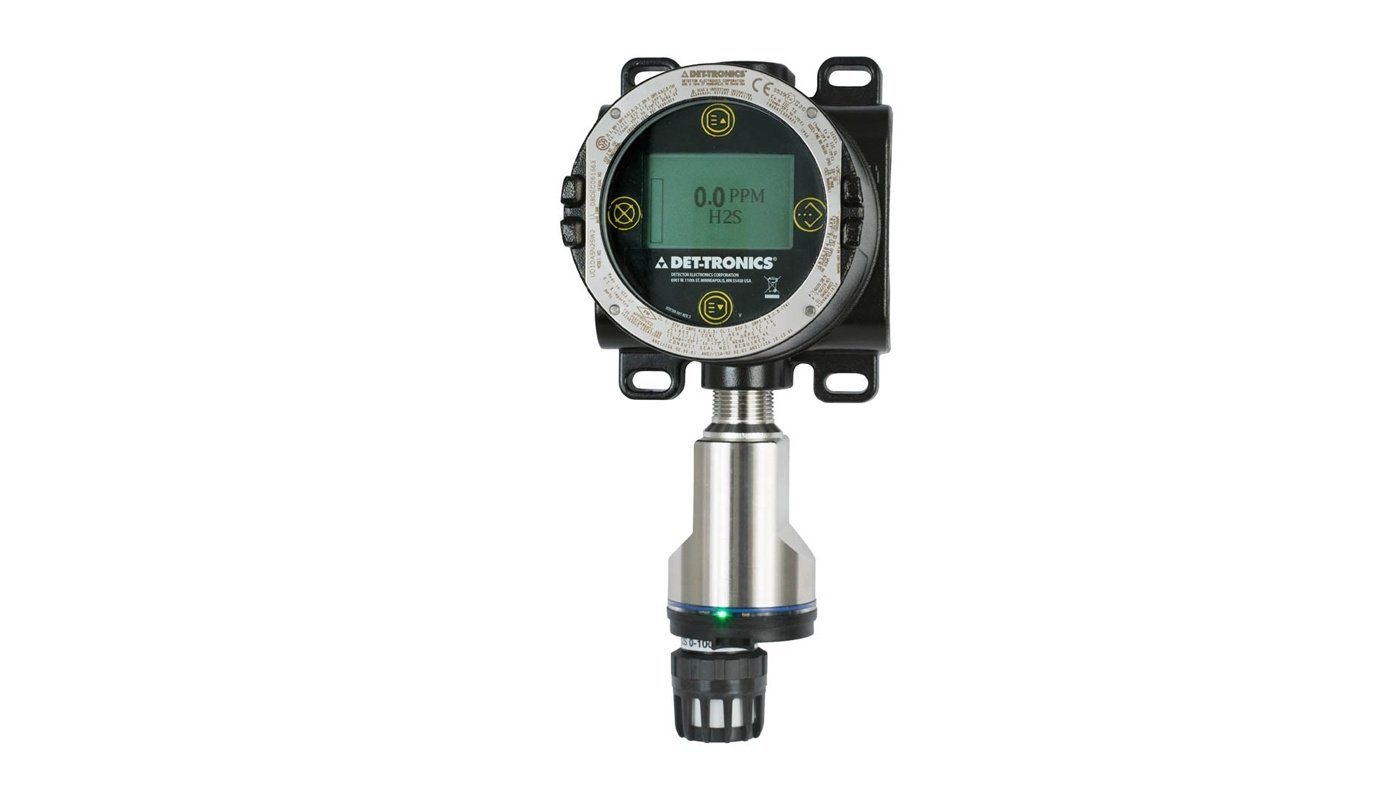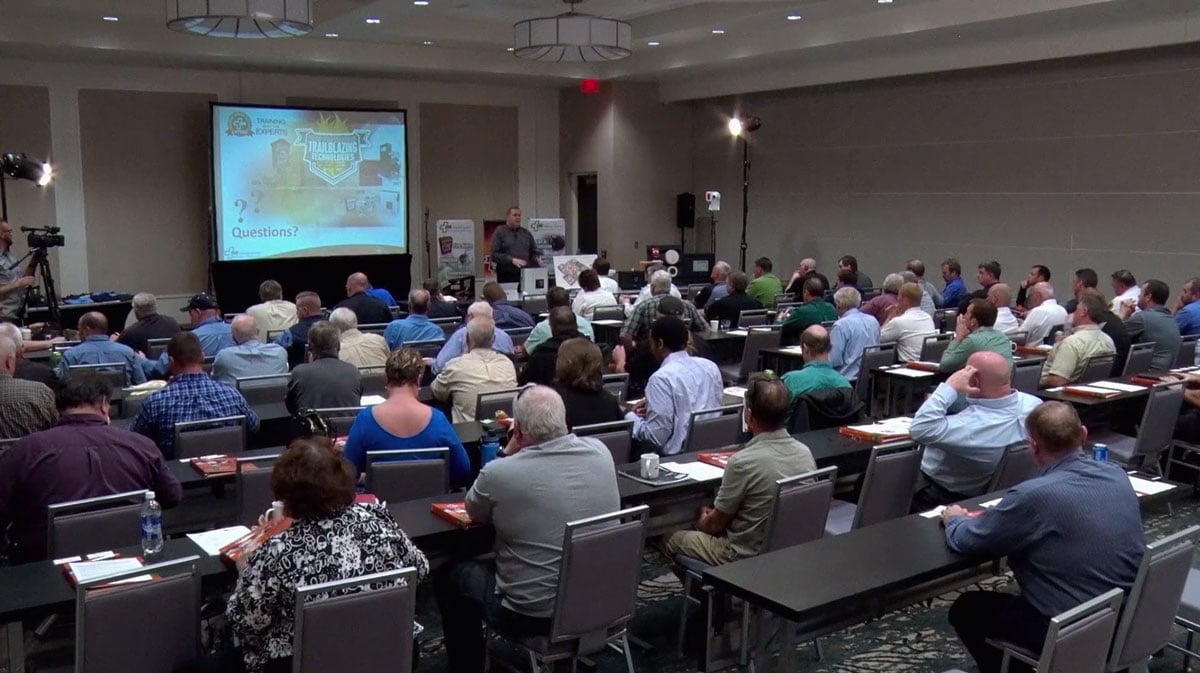The use of a gas monitoring system, with appropriate action taken if dangerous levels of gases are detected, can help to prevent an explosion or can help to prevent worker injury or exposure to toxic gases. Action can be taken and initiated automatically by the gas monitor to help prevent the gas level from rising further. Such action could be the automatic shutoff of gas valves, turning on a ventilation fan, shutting down a process, or audible and visual alarms to alert and evacuate personnel.
Flash Point
Temperature at which the liquid phase gives off enough vapor to flash when exposed to an external ignition source.
Fire Point
When a liquid is heated past its flash point, it will reach a temperature where sufficient vapor is given off to maintain combustion.
Ignition Point
The minimum temperature at which a substance will burn or ignite independent of an external heat source.
 Lower Explosive Limit (LEL)
Lower Explosive Limit (LEL)
Also known as Lower Flammable Limit (LFL).
Minimum concentration of gas or vapor mixed with air that will cause the propagation of flame when it comes in contact with a source of ignition (spark or flame).
Concentrations of gas below the LEL are too lean to ignite.
Explosive Range
Explosive range is different depending on the gas or vapor. As the fuel increases, oxygen decreases to the point where there is no longer a potential for explosion thus reaching the UEL.
Upper Explosive Limit (UEL)
Maximum concentration of gas or vapor in the air will cause the propagation of flame when exposed to a source of ignition (flame or spark).
Mixtures are considered too RICH to support combustion if they are above the UEL.



 Lower Explosive Limit (LEL)
Lower Explosive Limit (LEL)

